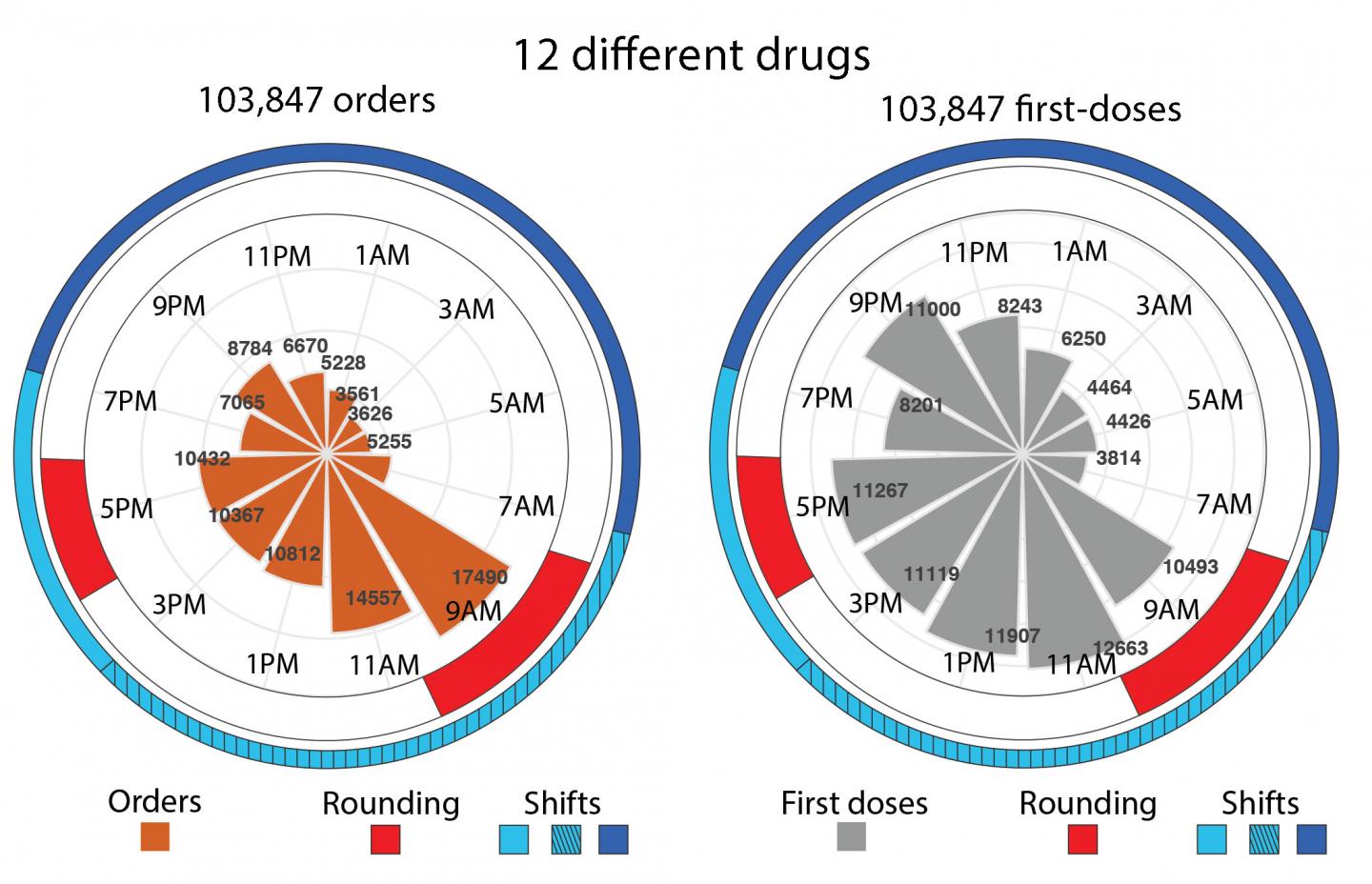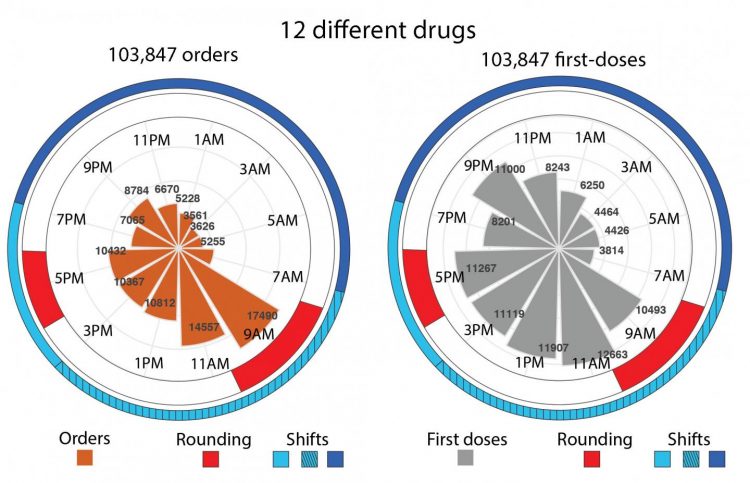
Credit: Cincinnati Children’s
Too many hospitals provide medications according to the practicalities of their staffing schedules rather than the ideal dosing times for their patients, according to a new study led by experts at Cincinnati Children’s.
The study, published Oct. 1, 2019, in PNAS, was led by David Smith, MD, PhD, Divisions of Pediatric Otolaryngology and Pulmonary Medicine; Marc Ruben, PhD; and John Hogenesch, PhD, Co-Director, Center for Circadian Medicine at Cincinnati Children’s.
The study examined the daily distribution of approximately 500,000 doses of 12 drugs in 1,486 inpatients at a major U.S. children’s hospital.
“For every drug, order times were time-of-day?dependent, with morning-time surges and overnight lulls. These rhythms corresponded to shift changes and rounding times,” the co-authors state.
However, these time peaks do not always match when patients need medications the most, be it to relieve pain, control blood pressure, or battle infections.
For example, the study found a day shift-driven rhythmic order for morphine, acetaminophen and other pain medications, which raises questions about whether night-time pain goes undertreated. Meanwhile, some corticosteroids are administered in the evening, which can lead to insomnia and overnight hunger.
Smith and Hogenesch say their team is working with other doctors and nurses at Cincinnati Children’s to adjust drug administration protocols where warranted. They also are reminding caregivers to conduct night-time check-ins with patients at highest risk of experiencing pain.
“There is great potential here to align what we know about drug timing from the last 60 years of research and implement this knowledge in hospitals,” Smith says. “There are immediately actionable steps.”
The pilot work happening at Cincinnati Children’s represents some of the early steps in a growing recognition of how circadian rhythms (our set of internal body clocks) can influence the outcomes of medical care.
“The most exciting aspect of these findings is the opportunity to conduct larger-scale studies of dosing times and how drugs work,” Hogenesch says.
###
Read more about advances in circadian science:
Is Now the Time for Circadian Medicine?
Dosing Time Matters
This work is supported by Cincinnati Children’s Hospital Medical Center, the National Institute of Neurological Disorders and Stroke (2R01NS054794 and 1R21NS101983), the National Heart, Lung, and Blood Institute (R01HL138551) and the National Human Genome Research Institute (2R01HG005220).
Media Contact
Timothy J Bonfield
[email protected]
Related Journal Article
http://dx.





